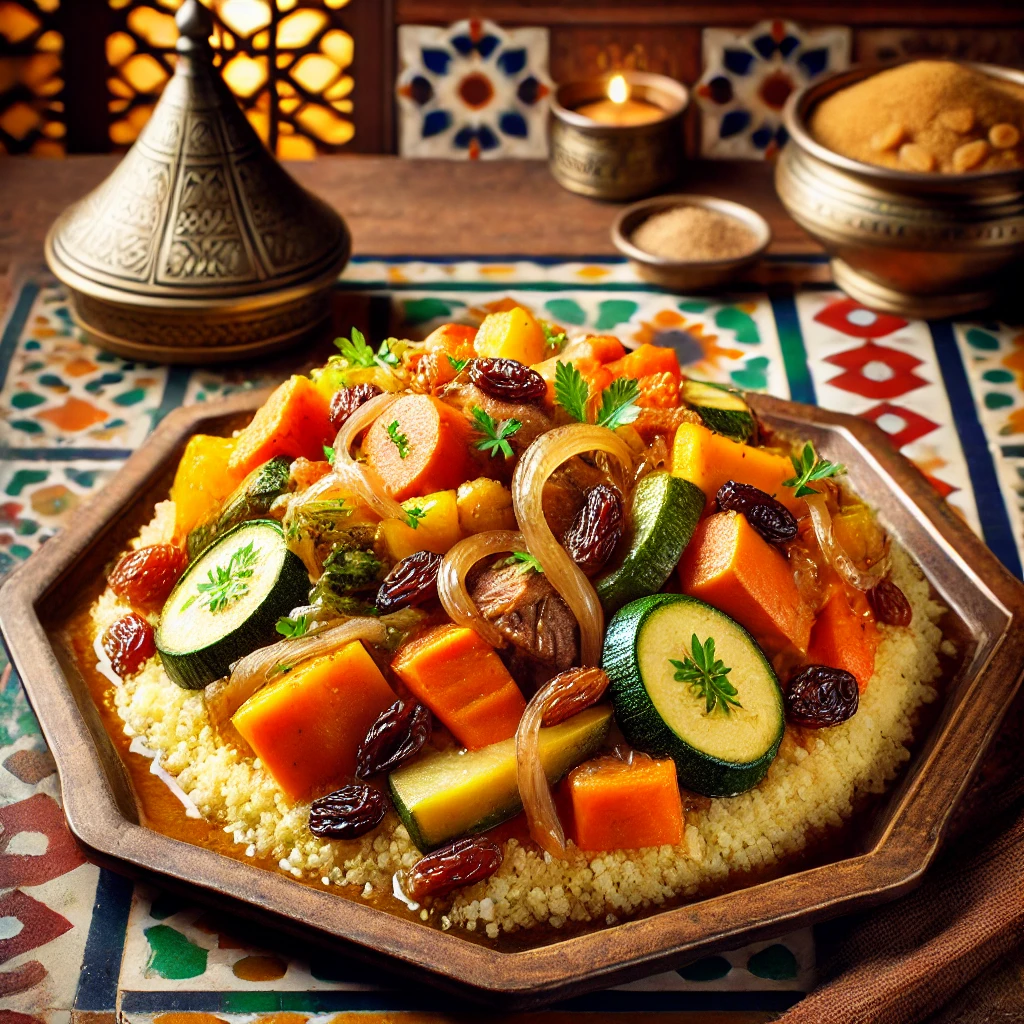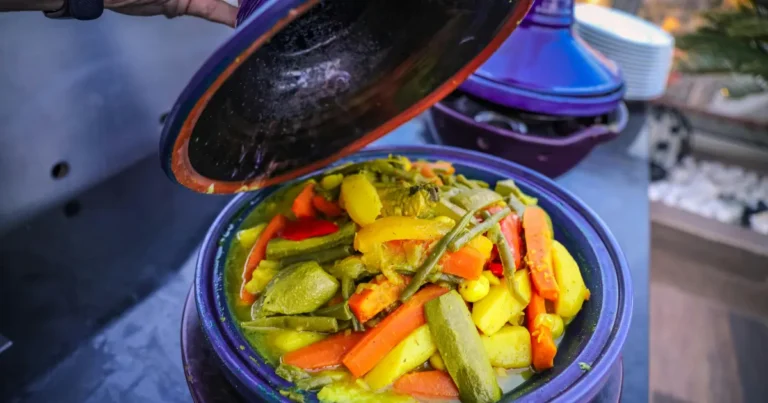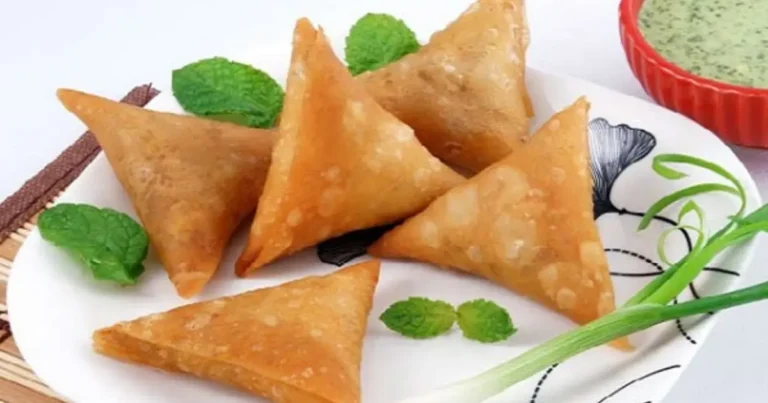Moroccan Couscous: A Friday Tradition Full of Flavor
Introduction
Every Friday, across Morocco , a symphony of flavors fills the air as families gather around to share a beloved dish that transcends generations—Moroccan Couscous. This iconic meal, steeped in tradition and bursting with wholesome ingredients, is far more than just food. It’s a celebration of family, culture, and togetherness. Whether you’re a seasoned enthusiast of Moroccan cuisine or someone looking to explore its rich culinary tapestry, couscous is an experience you won’t want to miss. In this article, we’ll uncover the secrets of Moroccan Couscous, its cultural significance, and how you can recreate this delicious tradition in your own kitchen.
What Is Moroccan Couscous?
The Basics of Couscous
Couscous is a type of pasta made from semolina flour and water, rolled into tiny granules. Though simple in form, it serves as the foundation for one of Morocco’s most cherished dishes. Light, fluffy, and versatile, couscous absorbs the rich flavors of the stews and vegetables it’s paired with, making it a culinary canvas that elevates every bite.
A Culinary Staple
In Moroccan households, couscous is more than a dish—it’s a ritual. Traditionally served on Fridays after the midday prayer, it embodies the values of sharing and hospitality. Families gather around a large communal dish, eating together with their hands, symbolizing unity and gratitude.
The Cultural Significance of Couscous Fridays
A Weekly Tradition
Friday is a sacred day in Morocco, akin to Sunday in many Western cultures. It’s a day of rest, reflection, and community. Couscous plays a pivotal role in marking this special occasion. As the week comes to a close, families and friends reconnect over this comforting meal, strengthening bonds and creating lasting memories.
A Dish of Generosity
Couscous Fridays are not confined to the home. It’s common for neighbors to exchange portions or invite others to share their meal. This practice highlights the Moroccan spirit of generosity and hospitality, turning every meal into an act of kindness.
Ingredients That Bring Moroccan Couscous to Life
Essential Ingredients
To make authentic Moroccan Couscous, you’ll need the following staples:
-
Couscous grains: Preferably medium or fine grain.
-
Vegetables: Carrots, zucchini, turnips, and pumpkin are commonly used.
-
Protein: Lamb, chicken, or beef is traditionally added, though vegetarian versions are also popular.
-
Spices: A blend of cumin, turmeric, ginger, and cinnamon creates the dish’s signature flavor.
-
Chickpeas: For added texture and protein.
-
Raisins and almonds: Optional, but they add a delightful sweet and nutty contrast.
A Note on Freshness
Moroccan cooking emphasizes fresh, seasonal ingredients. The vegetables in your couscous should be vibrant and locally sourced whenever possible, ensuring maximum flavor and nutrition.
How to Prepare Moroccan Couscous
Step-by-Step Recipe
| Ingredient | Quantity | Notes |
|---|---|---|
| Couscous grains | 500g | Medium or fine grain |
| Lamb or chicken | 1kg | Bone-in for extra flavor |
| Carrots | 3 pcs | Peeled and halved |
| Zucchini | 2 pcs | Sliced |
| Turnips | 2 pcs | Quartered |
| Chickpeas | 1 cup | Soaked overnight |
| Spices (cumin, turmeric) | 1 tsp each | Adjust to taste |
| Olive oil | 3 tbsp | For sautéing |
| Water | 1.5 liters | For steaming and broth |
-
Prepare the Couscous Grains:
-
Place couscous in a large bowl and drizzle with olive oil. Add a pinch of salt and rub the grains between your hands to coat evenly.
-
Steam the couscous over boiling water for 20 minutes, fluffing with a fork halfway through.
-
-
Cook the Protein:
-
Heat olive oil in a large pot and brown the lamb or chicken. Add the spices and sauté until fragrant.
-
Add water and simmer until the meat is tender.
-
-
Add the Vegetables:
-
Layer the carrots, turnips, and zucchini on top of the meat. Add chickpeas and cook until the vegetables are tender but not mushy.
-
-
Assemble the Dish:
-
Spread the steamed couscous on a large serving platter. Create a well in the center and add the meat and vegetables. Ladle the broth over the dish for added flavor.
-
-
Garnish:
-
Top with raisins and almonds if desired, and serve hot.
-
Health Benefits of Moroccan Couscous
Nutritional Powerhouse
Moroccan Couscous is as nourishing as it is delicious. Here’s why:
-
Rich in fiber: Thanks to the abundance of vegetables and whole grains.
-
Protein-packed: With options like lamb, chicken, or chickpeas.
-
Anti-inflammatory: Spices like turmeric and ginger provide powerful health benefits.
Balanced and Wholesome
This dish embodies the Mediterranean diet, which is known for its heart-healthy and anti-aging properties. By combining protein, healthy fats, and complex carbohydrates, Moroccan Couscous offers a balanced meal that fuels your body and soul.
Variations to Try
Vegetarian Couscous
Skip the meat and load up on extra vegetables and chickpeas. You can also add roasted butternut squash or sweet potatoes for a touch of sweetness.
Spicy Couscous
For those who love a kick, add harissa or cayenne pepper to the broth. This variation pairs beautifully with cooling sides like yogurt sauce.
Sweet Couscous
A dessert version of couscous includes ingredients like milk, sugar, cinnamon, and dried fruits. It’s a delightful way to end a meal.
Tips for the Perfect Couscous
-
Fluff the grains: Use a fork to separate the grains after steaming to keep them light and airy.
-
Don’t rush: Traditional Moroccan Couscous is a labor of love. Take your time to let the flavors develop.
-
Serve communal-style: Embrace the tradition of sharing by serving couscous on a large platter for everyone to enjoy.
FAQ Section
What makes Moroccan Couscous special?
Moroccan Couscous stands out for its rich blend of spices, tender vegetables, and communal dining experience. It’s not just a meal—it’s a cultural tradition.
Can I make couscous without a steamer?
Yes! You can use a fine-mesh sieve over a pot of boiling water as a makeshift steamer. Just ensure the couscous doesn’t touch the water.
What can I serve with Moroccan Couscous?
Couscous pairs beautifully with Moroccan mint tea, fresh salads, or a side of harissa for added spice.
How can I store leftovers?
Store couscous in an airtight container in the fridge for up to three days. Reheat gently on the stove with a splash of water to restore its fluffy texture.
Conclusion
Moroccan Couscous is more than just a dish—it’s a sensory journey that captures the essence of Moroccan culture and tradition. From its vibrant spices to its soul-warming flavors, couscous brings people together in a way that few meals can. Whether you’re preparing it for a Friday gathering or simply looking to explore new culinary horizons, this iconic dish is a testament to the power of food to connect us all.
So, what are you waiting for? Gather your ingredients, roll up your sleeves, and bring the magic of Moroccan Couscous Couscous into your home. Your taste buds and loved ones will thank you!




